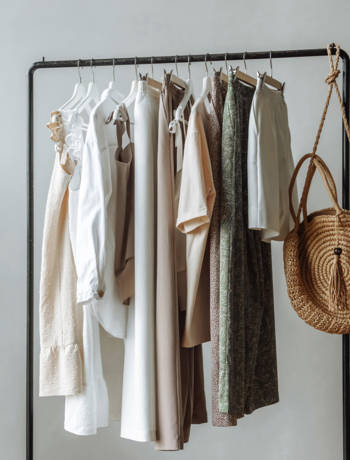Homes
10 ways to cut your energy bills
by Rae Ritchie

With the price of gas and electricity rising sharply, Rae Ritchie investigates how to save cash – and carbon, too
There’s bad news – especially if you’re struggling to balance the books. Electricity and gas bills are set to rise sharply when industry regulator Ofgem updates the energy price cap this month, increasing it by 80%*. It follows a rise of 54% last April and will see energy costs reach £3,549 per year for an average household, compared with £1,277 this time last year, mainly due to an increase in demand post-Covid, and the war in Ukraine, which has limited access to Russian energy supplies. It’s not surprising, then, that many of us are looking for ways to cut down the amount we spend on gas and electricity. And it is possible to chip away at these costs by lowering household energy consumption – the less you use, the more you can save. As an added benefit, using less gas and electricity is more sustainable, as you’ll be reducing your carbon emissions. Smaller bills and a smaller carbon footprint make for a big win. Here are 10 ways to get started.
*Figures correct at time of publishing
Layer up
Reach for a jumper, not the thermostat. This is a tactic deployed by Jessica Cresswell, aka @thewoodlandwife on Instagram. ‘We have always tried to keep energy usage down. Not just from an environmental standpoint, but to keep costs down, too,’ says Jessica. ‘During the autumn and winter months, I often think it would be lovely to simply turn the heating up, but I put on an extra layer instead, and regularly tell our two daughters to do the same!’
Lower the thermostat
Donning warm clothes makes it easier to try another energy-saving measure: turning down your thermostat by 1°C. ‘We hear this advice all the time,’ says Jen Gale (@sustainableish), author of The Sustainable(ish) Living Guide: Everything You Need to Know to Make Small Changes That Make a Big Difference (Green Tree, £12.99). ‘But have you actually done it yet? This simple act can mean you use up to 10% less energy heating your home.’ We typically heat our homes to between18-21°C... so why not see how low you can persuade the family to go?
Unplug devices
Professional organiser and KonMari consultant Katrina Hassan (@spark_joy_london) encourages clients to unplug – literally. ‘Across the UK, people are unnecessarily over-charging their mobile phones, tablets and laptops,’ she points out. ‘Instead, as soon as your device is fully charged, try and get into the habit of unplugging it.’ Not only will this save energy, it prolongs battery life; standby mode is also thought to be responsible for 1% of global emissions.
Have a cuppa
Fancy a brew? Stick the kettle on – but only fill it with the exact amount of water you need. ‘A kettle can use 2,000 watts of power, which is more than your TV, laptop and fridge put together,’ reports Giki, afree interactive guide to reducing your environmental impact. ‘Why pay to heat up some water that then goes cold again?’ Boiling less water is one of more than 20 energy-saving challenges listed on Giki, ranging from free and easy to more complicated and costly. Sign up for more suggestions to reduce your fuel bills and your carbon footprint further (@giki.earth).
Lessen the load
The average tumble dryer produces 1.8kg of CO2 each timeit is used – which quickly adds up,’ says Georgina Wilson-Powell (@georgina_wp), author of Is It Really Green? Everyday Eco-dilemmas Answered (DK, £12.99). So does the energy bill, with tumble dryer use adding as much as £60 a year. The solution? ‘Switch to air-drying, either using a clothes rack indoors, or a clothes line, if you have a garden or balcony,’ says Georgina. ‘It’s not just the earth you’ll be helping, it’s your pocket, too.’ Air-drying clothes also means they areless wrinkly – the perfect excuse to skip energy-consuming ironing. If you still want to press clothes, save up your pile and doit all in one go, rather than lots of smaller sessions throughout the week.
Switch your bulbs
Replacing inefficient light bulbs is another easy change. ‘Switching to LED lights at home is one of those rare but brilliant eco swaps that saves money and the planet,’ enthuses sustainable living blogger Karen Maurice (@n4mummy). ‘A good LED light can last up to 20 times longer, so you need to buy fewer of them. They’re also really energy efficient and convert 95% of their energy into light and only 5% gets wasted as heat. Plus, they have the same luminosity as a traditional bulb. So overall, LED lights produce the same amount of light, save you money and have a much smaller carbon footprint... brilliant!’
Make a DIY draught excluder
According to the Energy Saving Trust, draught-proofing windows and doors can save around £45 a year in energy bills. Craft your own cosy draught excluder by cutting a piece of fabric to the length of your door frame, and between 35-40cm wide. Fold your fabric in half lengthways, making sure the side of the fabric you want to be showing is on the inside. Pin down the length of your fabric and along one end to create an open tube, and sew the pinned sides, either by machine or by hand. Turn your open tube inside out and insert your chosen stuffing; old tights work well, but shred first to make your draught excluder less lumpy. Carefully sew up the end by hand.
Bleed your radiators
Your radiators have a key roleto play in energy saving. Bleed them once a year at the start of the heating season to help make sure your boiler is delivering heat into each room most efficiently. And don’t waste energy by heating rooms you don’t use very often; turn radiators off, or set thermostats to the ‘frost’ setting (the snowflake without a number). This primes the boiler to heat the radiator should the temperature drop below 5°C.
Craft your own thermal curtains
Closing blinds and curtains when it’s getting dark makes a difference, with researchers at the University of Salford finding that it cut heat loss by around 15%. For extra insulation, give your curtains a thermal lining; the National Trust has a series of easy-to-follow videos with Lauren Guthrie, finalist of the BBC’s Great British Sewing Bee, to guide you through the process.
Get moving
Our bodies are natural heat producers, but we only warm up when we get moving. Desk jobs and sofa-slouching often mean that we don’t move around as much aswe should. Get active and you’ll be tackling both your energy bills and your fitness at the same time.












